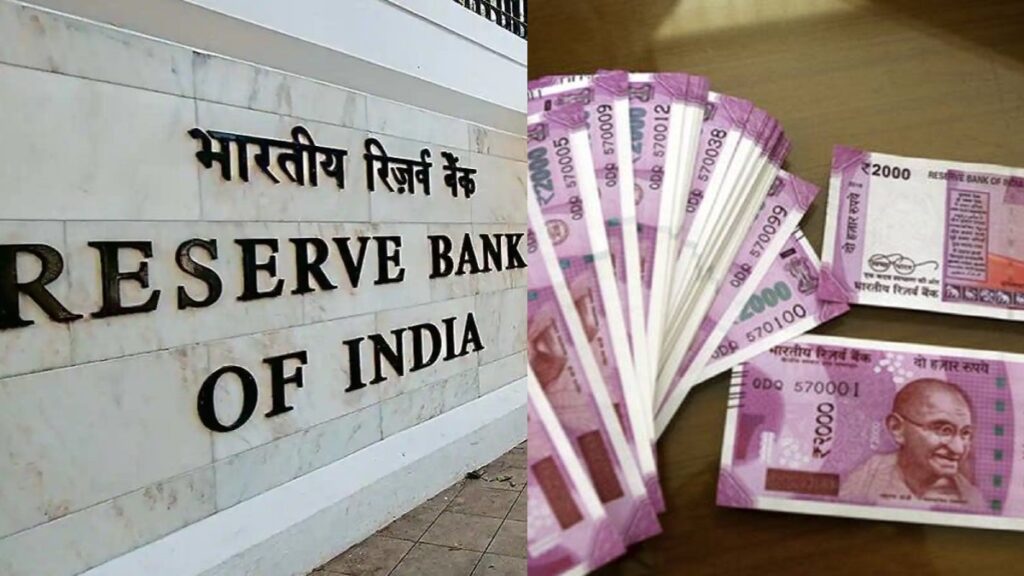
Dainik India News lucknow : RBI has announced that it is withdrawing Rs 2000 notes: Rs 2000 notes will be out of circulation. After this, what will happen after 30th September is the biggest question. No new announcement has been made regarding this issue yet. However, RBI has clarified that this decision will affect only Rs 2,000 notes and other recognized notes will continue. Therefore, after September 30, the general public will be able to continue using various other currency notes.
It’s a good news that rupee 2000 notes are going to be out of circulation, but people need not panic. RBI have been given four months to exchange the notes from bank.
Approximately six and a half years ago, the Reserve Bank of India introduced two thousand rupee notes. Now a decision has been made to withdraw them from circulation. However, they have not been declared illegal; instead, people have been given a period to exchange them at banks.
In simple terms, this decision means that the two thousand rupee notes will no longer be available in the market. Any notes that are deposited in banks will not be reissued. Consequently, they will not circulate again and will be completely phased out.
No, the two thousand rupee notes have not become useless. The Reserve Bank of India (RBI) has clearly stated that the two thousand rupee notes will continue to be legal tender, which means they will remain fully valid and legal.
If you want to exchange your two thousand rupee notes, you can either deposit them into your bank account or exchange them for other denominations. You can visit the bank starting from Tuesday, May 23, 2023, to exchange the notes. This process will continue until September 30, 2023. The banks have also issued separate guidelines for this purpose.
The notes can be exchanged at any bank. You can visit any bank, including the regional offices of the Reserve Bank of India (RBI) where the issuing departments are located, to exchange the notes. The facility to exchange the notes will be available at these locations as well.
If you have 50 thousand or 1 lakh rupee notes, what should you do?
The Reserve Bank of India (RBI) has instructed that only two thousand rupee notes of a maximum value of 20 thousand rupees can be exchanged at once, so only 10 notes can be exchanged at a time.
Will it be difficult to get two thousand rupee notes from the bank?
No, the RBI has instructed banks to immediately stop issuing two thousand rupee notes to customers.The RBI has also asked banks to make the necessary changes in their ATMs accordingly.
Could there be difficulties in the market?
It is clear from RBI’s directives that two thousand rupee notes will continue to be legal tender, but it is possible that there may be difficulties in transactions involving these notes in the market. In such cases, the easiest way is to go to the bank and exchange the notes.
The biggest question: What will happen after September 30?
According to sources from news agency ANI, two thousand rupee notes may continue to be legal tender even after September 30. The RBI believes that four months is sufficient time for people. This is a routine procedure, and there is no need for people to panic.
When were the two thousand rupee notes introduced?
The RBI issued two thousand rupee notes in November 2016. They were issued under Section 24(1) of the RBI Act, 1934. This decision was taken to minimize the impact on the market and economy caused by the withdrawal of the 500 and 1000 rupee notes that were in circulation at that time during the demonetization exercise.
How many two thousand rupee notes are in circulation?
According to the RBI, approximately 89% of the two thousand rupee notes were issued before March 2017. These notes have either crossed or are about to cross the limit of their four to five-year lifespan. As of March 31, 2018, there were 6.73 trillion rupees worth of these notes in circulation, accounting for 37.3% of the total notes. By March 31, 2023, this figure had decreased to 3.62 trillion rupees. In other words, the share of two thousand rupee notes in the total notes in circulation remained at 10.8%.
According to the RBI, what is the main reason behind this decision?
After demonetization, two thousand rupee notes were introduced. When an adequate quantity of other denomination banknotes became available, the objective of introducing two thousand rupee notes was fulfilled. Therefore, the printing of two thousand rupee notes was also discontinued in 2018. According to the RBI, two thousand rupee notes are not extensively used in day-to-day transactions. Additionally, an ample supply of other denomination notes is available for the general public. Hence, under the RBI’s clean note policy, the decision was made to remove two thousand rupee notes from circulation.
